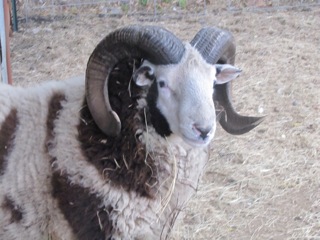Lots of locks and lanolin today! Our pals Greta and Kate came to learn about washing wool, and we met new friends, Julie and Daniel who have a starter flock of Rambouillet sheep south of Fort Worth.
They came to learn about what they had, now that their fleeces are off the sheep and in bags. (Our shearer, Danny, did a beautiful job for them, as usual.) Rambouillets are big sheep - their fleeces are 7-12 pounds each, right off the sheep.
And what they have is mighty fine. Gorgeous fine wool from each of their 14 sheep. What a pleasure to run my fingers through this beautiful greasy goodness.
We skirted one of their big fleeces, separating out the less fine areas and the really grassy parts, and selected a nice handful to wash. We couldn't wait to see how the wool would look, clean.
A couple of hot washes and a rinse make a world of difference. This is going to become a lot of really amazing yarn someday. Of course, I've recommended that they send their fiber off to Lynn Snell at Spinderellas. 'Cuz I know she'd make some amazing roving or yarn out of it.
I want to be sure to tell you that they're offering lots of this year's clip for sale in its raw state. These fleeces are very consistent all over with the kind of crimp that makes us spinners go weak in the knees. Julie and Daniel will be up in the Plano area next weekend, so if you think you might like to buy some of this wool by the pound, (probably $10-$15/pound, depending on how vm-free it is) or by the whole fleece, let me know and I'll have Julie and Daniel drop by with some for your perusal. I can teach you how to skirt and wash it!
I'm looking forward to getting to know our new friends better - not only are they really working on learning all about their sheep, their wool and what spinners want, but they are developing an orchard with figs, pomegranates and pears. Wouldn't that be a great field trip? I want to see Larry the ram, too. He sounds like a real character.
It's so fun to hang out with new shepherds. They have a lot to learn and a lot to share. I'm privileged to be part of all that.


